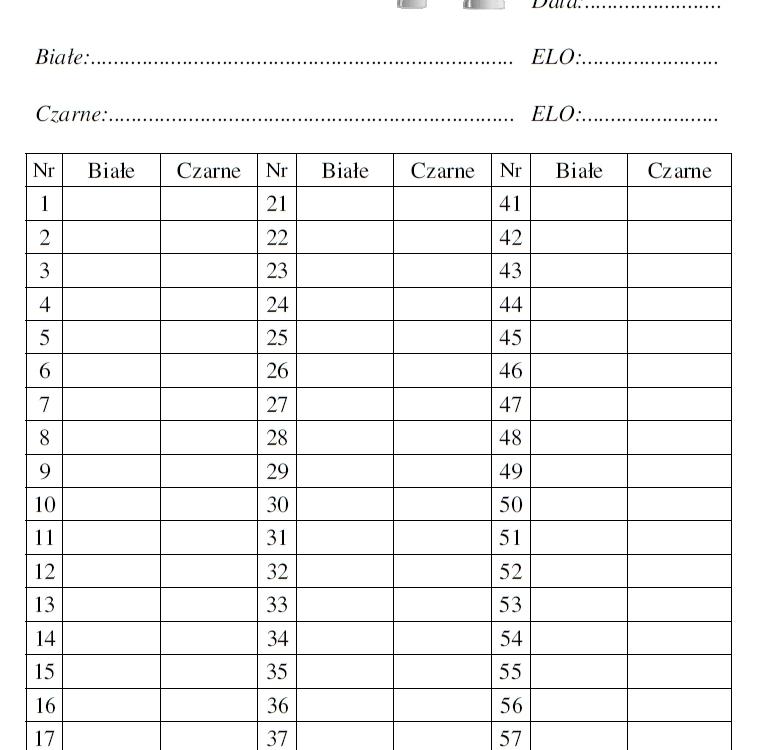
Evaluation Shorthand
Last year, after deciding to begin studying chess, I read Reassess Your Chess by Silman.
To be honest, I didn't get far. Mostly because I didn't have any real chess skills yet that could be reassessed. I do plan to get back to within the next 6 months.
I do plan to get back to within the next 6 months.
However, one thing I did get from it is the concept of evaluating strengths and weaknesses in the position. Before this, I only looked at immediate tactics centered around what I considered to be the most active part of the board. Needless to say, this hyper-focused attention to just one part of the position lead to ALOT of missed winning opportunities.
Since then, I've really been able to improve my board vision. Mainly because of a shorthand system I devised that helps me to keep track of strengths and weaknesses in the ever changing position on the board.
Today, I am going to share this shorthand system with you.
When I first became aware of assessing a position, my notes were long and difficult to follow and sometimes took up 2 or 3 sheets of A4 paper by the 20th move of the game. So, being a programmer, I decided to create a shorthand that would be easy to follow, be more compact and was as accurate as my assessing skills could/would be able to create.
The first thing I do when assessing the position is I look at my position for weaknesses. Personally, I have found it more useful to assess and fix my own weakenesses before anything else with the exception of clear attacking possiblities. But, even then, this is still my first step.
After that, I look at my opponents weaknesses, then their strengths and lastly, my strengths.
Whether you look at your own weaknesses and strengths first or your opponents is not important. It is really just a matter of taste. This shorthanding does not care.
In this shorthand, there is a symbol then the coordinates of a square or piece. ex:
+ Nb7 - This refers to the knight on b7.
Here are the symbols I use:
+ This means the square, pawn or piece is good beyond just OK. For example, it might be a centrally placed knight, a rook on an open file or a pawn that is covering important squares
++ This is better than '+'. This might be a centrally placed knight that is putting pressure on key squares, a rook that is bearing down on the king or queen or a pawn that has passing/promotion potential. Probably, this asset will be used soon.
+! This means the square, pawn or piece has some special advantage that I will want to make use of in the next few moves.
+? This means that I believe the pawn, piece or square has some potential and may warrant a closer look.
- This means the square, pawn or piece is weak in someway. It may be a backwards pawn, a piece that is not placed as well as it should be or a piece that is not protected as well as it should be.
-- This is more serious than '-'. It usually refers to a weakness that could be exploited easily by my opponent or one that is difficult to fix.
-! Something needs to be done immediately to fix the weakness. WIll probably require fixing in the next few moves.
-? Possible weakness that should be examined more closely.
? Candidate move.
?! Strong candidate move.
> This is a marker for possible plans.
ex; > Expand on queen side.
>! This is for whatever plan I have decided to implement in the next move or 2.
-> This shows that a piece is headed to a specific square.
ex; ?! Ng6 -> Nf4 - Means the knight wants to go to Nf4 by way of Ng6.
I also might put several moves in a candidate move:
?! Ng6, Qb2 This means I would like to play Ng6 and, on the next move, Qb2.
I don't just refer to pieces and squares in my notes:
+! c-file
+! qsp (queens side space)
That's it. Very simple. And as your knowledge of strengths and weaknesses grows, you can easily add them to this shorthand system.
Although it takes a little effort to develop the habit of assessing the positions and keeping these notes, I have found a few advantages:
- Improved board vision. By going over all the pieces and squares and choosing the ones that I feel require special notice, I am making a mental model of the entire position. Even in my Live Chess games this has become a habit for me. Believe it or not, I often am able to do this in blitz games. (note, in live games I DO NOT keep written notes. I play live games just like I am playing OTB)
- Keeping focus in Online Games. Sometimes it could be days before my opponent moves. This system keeps me from having to reassess everything each and every move. However, it is important to reassess your assessments as even the most subtle looking moves can make serious changes to your earlier assessments.
- Stronger moves. Once I have done this assessment for both my opponent and myself, I have a short list of all the important things on the board right there in front of me. This alone often directs me to serious strengths and weaknesses for both sides.
I hope you have found this useful. Please feel free to post your comments below.
